Table of Contents Show
Sit ups are one of the most popular and effective exercises for strengthening and toning your core muscles. But did you know that sit ups can also help you burn calories and lose weight? In this article, you will learn how many calories do you burn doing sit ups, what factors affect the sit up calories burn, and how to optimize your sit-up routine for maximum results. Let’s get started!
How many calories do sit ups burn?


The exact number of calories burned sit ups depends on several factors, such as your weight, the intensity and duration of the exercise, and your metabolism. However, a general estimate is that an average person who weighs 150 pounds can burn about 4.5 calories per minute by doing sit ups, which translates to 270 calories per hour
To put this into perspective, you would need to do about 111 sit ups to burn off the calories from a medium-sized apple, or about 667 sit ups to burn off the calories from a cheeseburger Of course, these numbers are only approximate and may vary depending on the type and size of the food.
However, sit ups are not meant to be a primary calorie-burning exercise. They are more effective as a core-strengthening exercise that can improve your posture, balance, stability, and athletic performance. Sit ups can also help you build muscle mass in your abdominal and hip muscles, which can boost your metabolism and help you burn more calories throughout the day
What Factors Affect the calories burned sit ups?
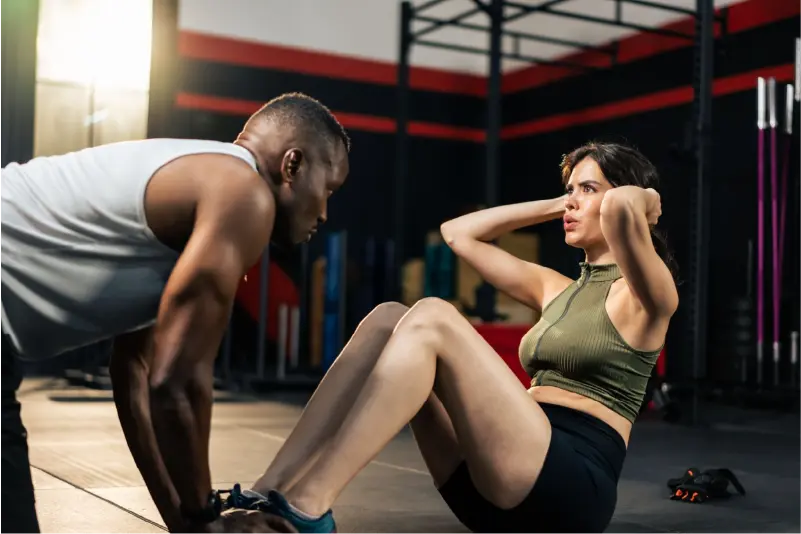

As mentioned earlier, the calorie burn of sit ups depends on several factors. Here are some of the most important ones:
- Your weight: The more you weigh, the more calories you burn by doing any physical activity, including sit ups. This is because your body has to work harder to move a larger mass. For example, a person who weighs 200 pounds can burn about 6 calories per minute by doing sit ups, while a person who weighs 100 pounds can only burn about 3 calories per minute
- The intensity of the exercise: The faster and harder you do sit ups, the more calories you burn. This is because you increase your heart rate and oxygen consumption, which requires more energy from your body. However, you should not sacrifice your form and technique for speed and intensity. Doing sit ups incorrectly can lead to injury and reduce the effectiveness of the exercise. You should always maintain a smooth and steady motion, keeping your feet flat on the floor and your fingertips on the back of your ears
- The duration of the exercise: The longer you do sit ups, the more calories you burn. However, this does not mean that you should do sit ups for hours on end. Doing too many sit ups can cause muscle fatigue and soreness, which can impair your performance and recovery. It can also increase the risk of overuse injuries and chronic pain. A good rule of thumb is to do 3 sets of 10 to 15 reps of sit ups, with a minute or so of rest in between sets. You can also vary the number of reps and sets depending on your fitness level and goals
- Your metabolism: Your metabolism is the rate at which your body burns calories at rest and during activity. It is influenced by many factors, such as your age, sex, height, body composition, genetics, hormones, diet, and lifestyle. Some people have a faster metabolism than others, which means they burn more calories by doing the same amount of exercise. You can boost your metabolism by increasing your muscle mass, eating a balanced diet, drinking plenty of water, getting enough sleep, and avoiding stress
How to Optimize Your Sit Up Routine for Maximum Results?
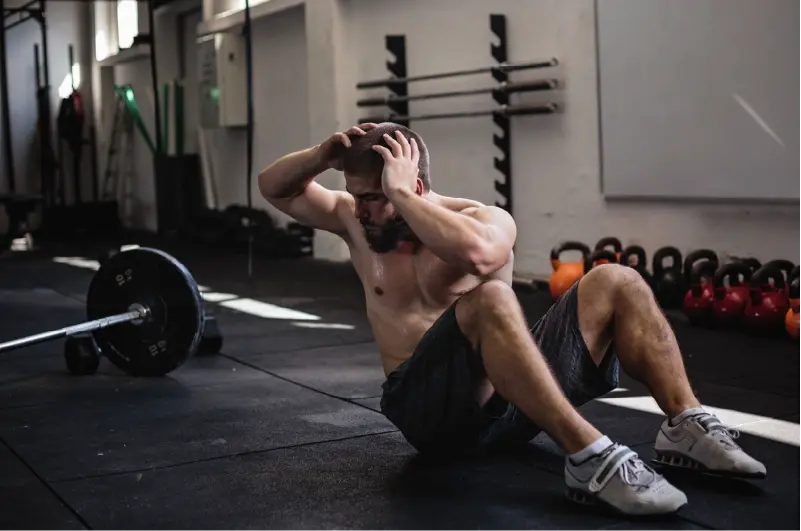

Sit ups are a great exercise for strengthening and toning your core muscles, but they are not enough to achieve a flat and defined stomach. To get the best results from your sit-up routine, you should also follow these tips:
- Incorporate other abdominal exercises: Sit ups mainly target the rectus abdominis muscle, which is the long and segmented muscle that forms the “six-pack”. However, there are other muscles in your core that are equally important for your health and appearance. These include the transverse abdominis, which is the deep muscle that wraps around your spine; the internal and external obliques, which are the muscles that run along the sides of your waist; and the lower back muscles, which support your spine and posture. To work out all these muscles effectively, you should include other abdominal exercises in your routine, such as crunches, leg raises, planks, twists, and bicycles
- Do cardio exercises: Cardio exercises are any exercises that raise your heart rate and make you breathe harder, such as running, cycling, swimming, jumping rope, or dancing. Cardio exercises can help you burn more calories and fat, which can reveal the muscles underneath. They can also improve your cardiovascular health, endurance, and mood. You should aim to do at least 150 minutes of moderate-intensity cardio or 75 minutes of vigorous-intensity cardio per week, according to the physical activity guidelines for Americans
- Eat a healthy diet: No matter how many sit ups you do, you will not see the results if you eat a poor diet that is high in calories, fat, sugar, and processed foods. These foods can cause weight gain, inflammation, bloating, and other health problems that can sabotage your efforts. To support your sit-up routine and your overall health, you should eat a balanced diet that is rich in lean protein, complex carbohydrates, healthy fats, fiber, vitamins, minerals, and antioxidants. These nutrients can help you build muscle, burn fat, reduce inflammation, improve digestion, and boost your metabolism. You should also drink plenty of water to stay hydrated and flush out toxins.
- Be consistent and patient: Sit ups are not a magic bullet that can give you a flat stomach overnight. They are a part of a long-term process that requires consistency and patience. You should do sit ups regularly, at least two to three times a week, along with other exercises and a healthy diet. You should also track your progress by measuring your waist circumference, body fat percentage, and weight. However, you should not obsess over these numbers or compare yourself to others. Everyone has a different body type and metabolism, and results may vary depending on many factors. The most important thing is to enjoy the process and celebrate every improvement you make.
How to Do Sit ups Correctly
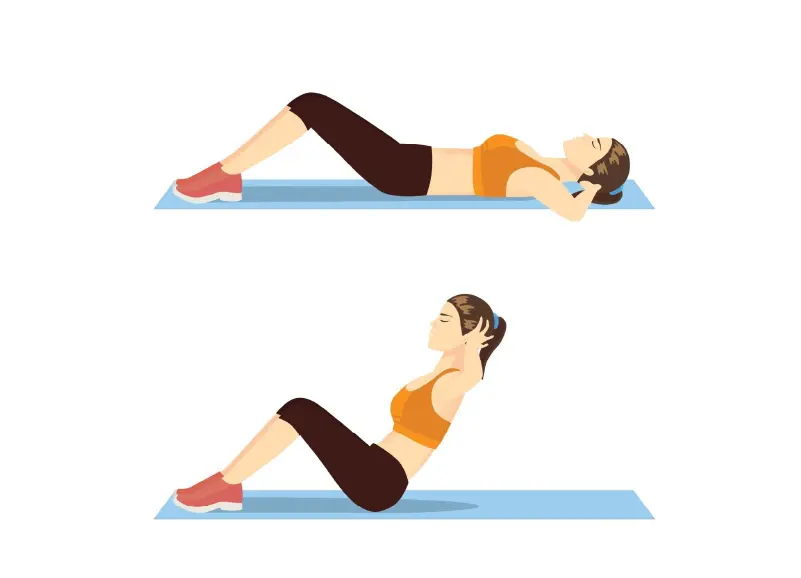

To get the most benefits from sit ups, you need to do them correctly and safely. Here are some steps to follow:
- Lie down on your back on a soft and flat surface, such as a mat or a carpet. Bend your knees and place your feet flat on the floor, about hip-width apart. You can also hook your feet under a sturdy object, such as a couch or a bed, for more stability.
- Place your hands behind your head, with your fingertips lightly touching the back of your ears. Do not interlock your fingers or pull on your neck. Keep your elbows out to the sides and your chin slightly tucked in.
- Engage your core muscles by drawing your belly button toward your spine. This will help you protect your lower back and prevent arching.
- Exhale and lift your upper body off the floor, curling your chest toward your knees. Keep your lower back in contact with the floor and avoid jerking or straining. Your shoulders should lift about 4 to 6 inches off the floor.
- Inhale and lower your upper body back to the starting position, keeping your core muscles engaged. Do not let your head touch the floor or relax your muscles completely.
- Repeat the movement for the desired number of reps and sets, resting for about a minute between sets.
How to Modify Sit ups for Different Levels
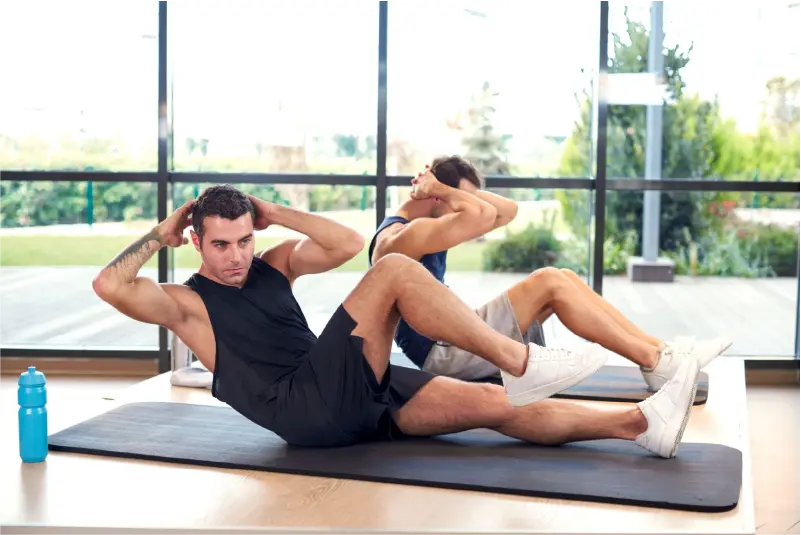

Sit ups can be modified to suit different levels of fitness and ability. Here are some ways to make sit ups easier or harder:
- To make sit ups easier, you can reduce the range of motion by lifting your upper body only halfway up, or by placing a pillow under your lower back for support. You can also place your hands on your thighs or across your chest instead of behind your head.
- To make sit ups harder, you can increase the range of motion by lifting your upper body all the way up until you touch your knees with your elbows, or by extending your arms overhead instead of behind your head. You can also add resistance by holding a weight on your chest or behind your head, or by wearing a weighted vest or belt.
- To target different muscles, you can change the position of your legs or feet. For example, you can do sit ups with straight legs, crossed legs, butterfly legs, or elevated legs. You can also do sit ups on an incline bench or a stability ball for more challenge.
How to Prevent Common Mistakes and Injuries When Doing Sit ups
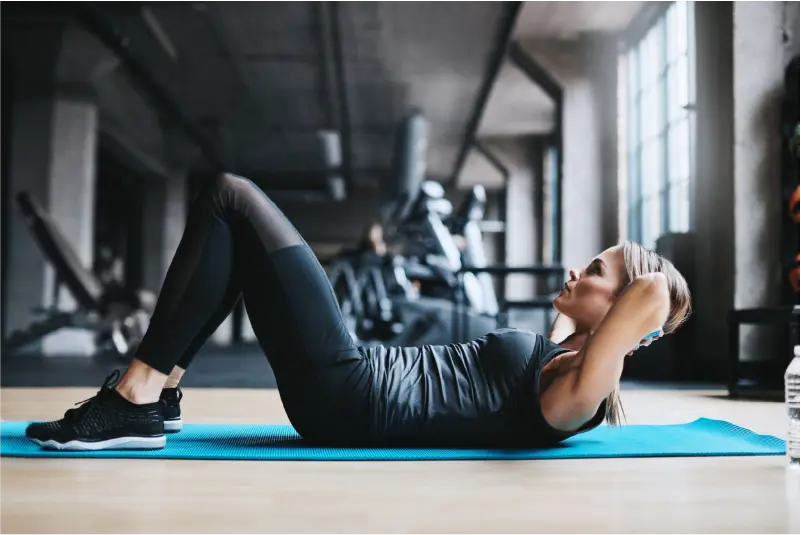

Sit ups are generally safe and effective when done correctly, but they can also cause some common mistakes and injuries when done incorrectly. Here are some tips to avoid them:
- Do not pull on your neck or head with your hands. This can cause neck strain and pain, as well as reduce the effectiveness of the exercise. Instead, use your hands to gently support your head and keep it aligned with your spine.
- Do not arch or flatten your lower back excessively. This can cause lower back pain and injury, as well as compromise the activation of your core muscles. Instead, maintain a natural curve in your lower back and keep it in contact with the floor throughout the movement.
- Do not hold your breath or tense up. This can increase your blood pressure and heart rate, as well as reduce the oxygen supply to your muscles. Instead, breathe normally and rhythmically, exhaling as you lift up and inhaling as you lower down.
- Do not do too many sit ups or do them too often. This can lead to overtraining and injury, as well as diminish the returns of the exercise. Instead, do sit ups two to three times a week, with at least one day of rest in between sessions.
How to Combine Sit ups with Other Exercises for a Complete Workout
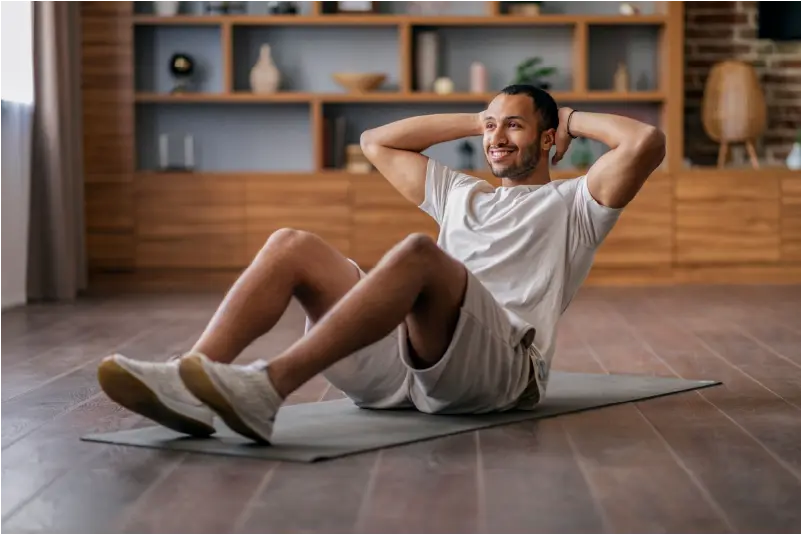

Sit ups are a great exercise for working out your core muscles, but they are not enough for a complete workout. You should also include other exercises that work out different muscle groups in your body, such as:
- Upper body exercises: These include exercises that target your chest, back, shoulders, arms, and upper core muscles, such as push-ups, pull-ups, rows, chest presses, shoulder presses, bicep curls, tricep extensions, and planks.
- Lower body exercises: These include exercises that target your hips, thighs, glutes, calves, and lower core muscles, such as squats, lunges, deadlifts, leg presses, leg curls, leg extensions, calf raises, and bridges.
- Cardio exercises: These include exercises that raise your heart rate and make you breathe harder, such as running, cycling, swimming, jumping rope, or dancing.
You can combine sit ups with other exercises in different ways depending on your goals and preferences. For example:
- You can do sit ups as part of a circuit training routine that involves doing several exercises in a row with little or no rest in between. This can help you burn more calories and fat in a shorter time, as well as improve your cardiovascular endurance and muscle strength.
- You can do sit ups as part of a high-intensity interval training (HIIT) routine that involves doing short bursts of intense exercise followed by longer periods of low-intensity exercise or rest. This can help you boost your metabolism and burn more calories and fat even after the workout, as well as improve your anaerobic and aerobic fitness and muscle power.
- You can do sit ups as part of a core-specific routine that involves doing only exercises that target your core muscles, such as crunches, leg raises, planks, twists, and bicycles. This can help you strengthen and tone your core muscles, as well as improve your posture, balance, stability, and athletic performance.
FAQs about Burn sit up calories
Here are some of the most frequently asked questions about sit ups:
Are sit ups bad for your back?
Sit ups are not inherently bad for your back, as long as you do them correctly and on a soft surface. However, if you have a pre-existing back condition or injury, you should consult your doctor before doing sit ups or any other exercise. You should also stop doing sit ups if you experience any pain or discomfort in your back or neck. Some alternatives to sit ups that are easier on your back are planks, bird dogs, dead bugs, and reverse crunches.
How many sit ups should I do a day?
There is no definitive answer to how many sit ups you should do a day, as it depends on your fitness level and goals. However, a good rule of thumb is to do 3 sets of 10 to 15 reps of sit ups, with a minute or so of rest in between sets. You can also vary the number of reps and sets depending on how you feel and what you want to achieve. However, you should not do too many sit ups or do them every day, as this can cause overtraining and injury.
Do sit ups burn belly fat?
Sit ups can help you burn calories and build muscle in your core area, but they cannot directly burn belly fat. This is because spot reduction, or the idea that you can lose fat from a specific area by working out that area, is a myth. To lose belly fat, you need to reduce your overall body fat percentage by creating a calorie deficit through exercise and diet. This means that you need to burn more calories than you consume on a regular basis. When you do this, your body will use the stored fat from all over your body as fuel, including your belly.
Do sit ups give you abs?
Sit ups can help you strengthen and tone your abs by working out the rectus abdominis muscle and other core muscles. However, having visible abs depends on more than just doing sit ups. You also need to have a low enough body fat percentage to reveal the muscles underneath the layer of fat. This requires a combination of cardio exercises, strength training exercises for your whole body, and a healthy diet.
Conclusion about how many calories do you burn doing sit ups
Sit ups are a classic and effective exercise for working out your core muscles. They can help you improve your posture, balance, stability, athletic performance, spinal flexibility, hip flexor strength, muscle mass, and metabolism. They can also help you to determine how many calories do you burn doing sit ups and lose weight when combined with other exercises and a healthy diet.
However, sit ups are not enough to give you a flat stomach or abs by themselves. You also need to reduce your body fat percentage by creating a calorie deficit through exercise and diet. To optimize your sit-up routine for maximum results, you should also incorporate other abdominal exercises for variety and balance; do cardio exercises for fat burning and heart health; eat a balanced diet for nutrition and energy; be consistent and patient with your efforts; and avoid doing too many sit ups or doing them incorrectly.
By following these tips and guidelines, you can make the most of your sit-up routine and achieve your fitness goals faster and easier.





Comments 1
Comments are closed.